Thunderbolt on Windows Part 2: Intel's DZ77RE-K75 & ASUS' P8Z77-V Premium
by Anand Lal Shimpi on June 3, 2012 2:08 AM EST- Posted in
- Motherboards
- CPUs
- Intel
- Asus
- Thunderbolt
- Ivy Bridge
- Chipsets
Quad-core mobile Sandy Bridge, 2.5" SSDs and Thunderbolt together have allowed me to use a notebook as my primary work machine. I get all of the portability benefits of a notebook, but with almost none of the performance sacrifices. The only thing I'm really missing is a good, external discrete GPU solution but that's a problem being worked on either via Thunderbolt link aggregation or the second revision of the Thunderbolt spec.

Despite what it's done for me, Thunderbolt has to be one of the most strangely handled interface specs of recent history. Intel engineered the spec, but Apple helped with a lot of the connector and cable design and as a result received a year long exclusive on Thunderbolt. Since its introduction, Thunderbolt has received a reasonable amount of support on the Mac platform. Apple even builds a display designed exclusively for use with Thunderbolt equipped Macs. Companies like Promise, Seagate, Western Digital, LaCie and Elgato are all shipping Mac compatible Thunderbolt devices as well.
With the exclusivity agreement over, Intel's partners in the Windows PC space are allowed to ship Thunderbolt enabled motherboards and systems. Making things even more bizarre is the fact that all Thunderbolt devices have to go through Intel's certification program if they are to be approved for use under Windows. Technically only Promise's Pegasus is certified (or about to be certified) for use under Windows, despite the fact that all of these Thunderbolt devices have been available for use under Windows via Boot Camp on Macs.
The complications extend even further when you realize that Apple's own products aren't certified for use under Windows. The Thunderbolt Display is only officially supported under OS X and I don't see Apple being incredibly motivated to work on Windows certification for it. Interfaces like USB are great because you can generally count on anything that physically fits in the port just working. With Thunderbolt on Windows we now have a situation where you can't assume the same.
We got the first look at a Thunderbolt equipped PC motherboard with MSI's Z77A-GD80 a couple of weeks ago. The interface worked but was not without its quirks. To be totally fair however, the Thunderbolt experience under OS X isn't perfectly problem free either. It turns out that MSI sampled that motherboard prior to making it through the motherboard certification process. Since then, the motherboard has made it through cert and has an updated BIOS that should improve its behavior.
Both Intel and ASUS sent us their latest, fully certified, Thunderbolt equipped motherboards for another look at how the interface works under Windows. With motherboards available today, it's now time to take a complete look at what Thunderbolt is like outside of the Apple ecosystem.
The Motherboards
ASUS sent its P8Z77-V Premium motherboard with Thunderbolt support, while Intel sent its DZ77RE-75K Thunderbolt board. Only the ASUS board is publicly available and is priced at $450. ASUS will have a more affordable SKU with integrated Thunderbolt available in the future: the P8Z77-V Pro/Thunderbolt, which should be priced below $300. Other ASUS boards will be upgradeable to support Thunderbolt via an on-board header + add-in card.
The Intel board starts at $262 and goes as high as $278 depending on the in-box configuration (both include WiFi/BT dongles, while the $278 version comes with front panel USB 3.0 support).
Both boards branch the Thunderbolt controller off of the Z77 PCH, borrowing four PCIe 2.0 x1 lanes. Given how full featured these motherboards are, PCIe switches are employed to allow the use of all the remaining PCIe devices connected to the PCH.
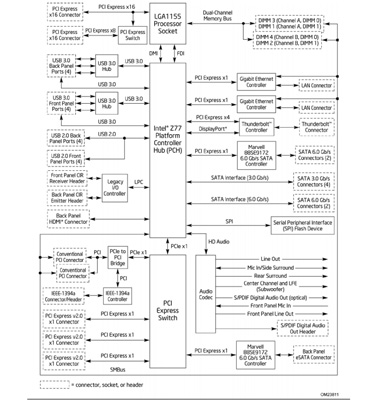
Intel's Z77 Thunderbolt Motherboard Block Diagram
ASUS goes one step further and includes a PCIe 3.0 switch to enable quad-CF/SLI support despite the limited number (16) of PCIe lanes Intel's LGA-1155 CPUs provide. ASUS' board features all the bells and whistles including a 32GB Marvell based Liteon mSATA SSD:
The Thunderbolt port on both boards can serve as either a Thunderbolt port or a DisplayPort output, similar to the behavior on a Thunderbolt Mac. Discrete GPUs are supported through the on-board Thunderbolt/DisplayPort output, provided you have Lucid's Virtu software installed.
As Thunderbolt carries more bandwidth than USB 3.0, trace routing is very important to achieving max performance. You'll notice that on all Thunderbolt boards we've tested thus far, the Cactus Ridge controller and Thunderbolt port are very close to one another. The spec for max trace length between the Thunderbolt controller and port is two inches, compared to up to 10 inches for Intel's USB 3.0 controller.
ASUS tells us that in order to reduce crosstalk it spaced Thunderbolt traces 1.5x wider than traces for USB 3.0 on its boards. Finally, all Thunderbolt traces are on the same PCB layer and don't feature any sharp angles in their route—only gradual arcs, which further improves performance. There's an impressive amount of engineering that has to go into bringing Thunderbolt support to a motherboard.
BIOS/UEFI support for Thunderbolt appears to be identical across all of the third party board makers. ASUS' Thunderbolt options look identical to MSI's for example:
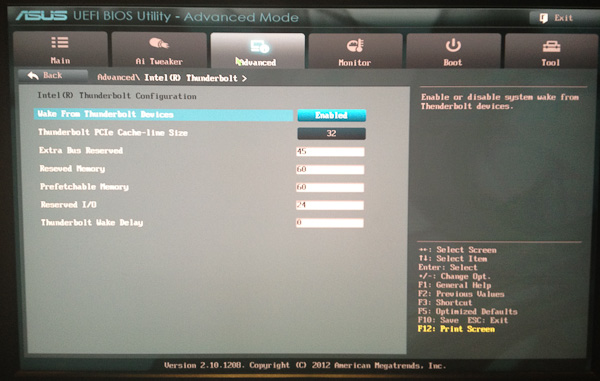
Interestingly enough, Intel doesn't actually expose any of the specific Thunderbolt settings. The Intel board just lets you enable/disable the interface itself:
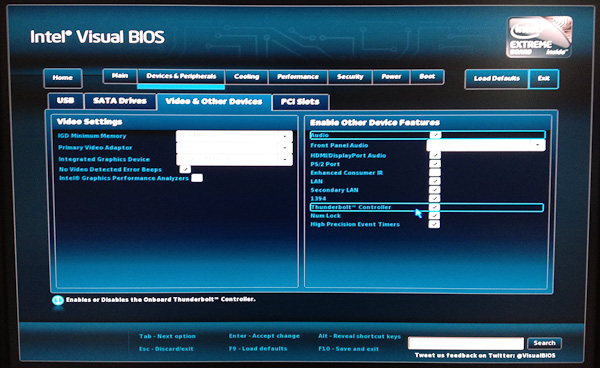


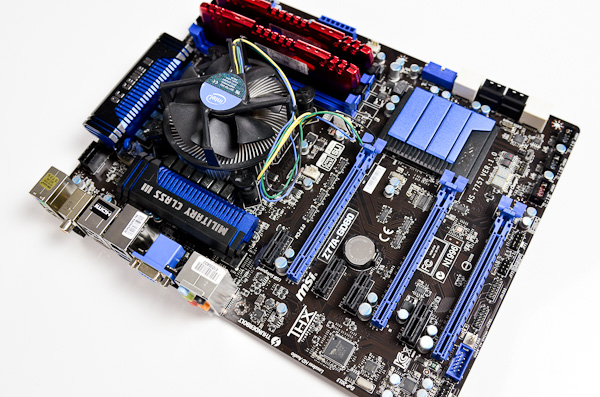
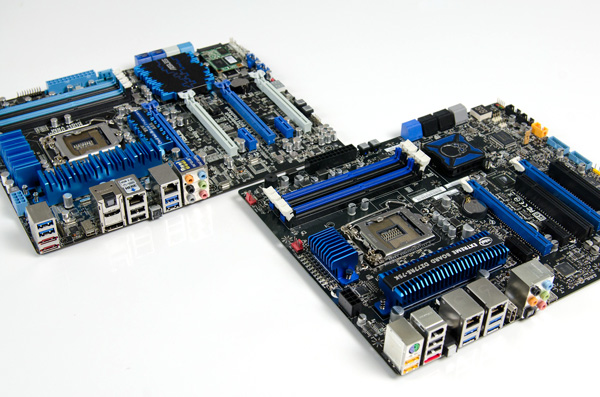

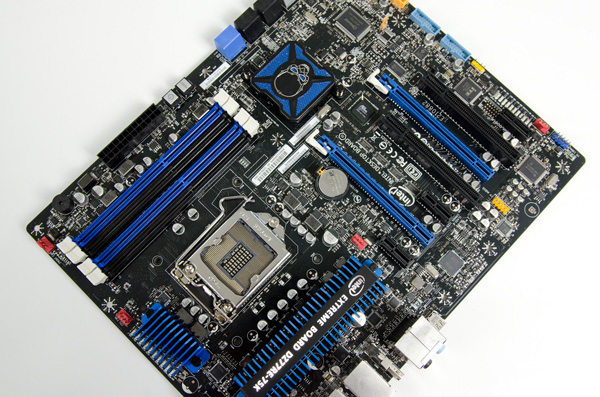
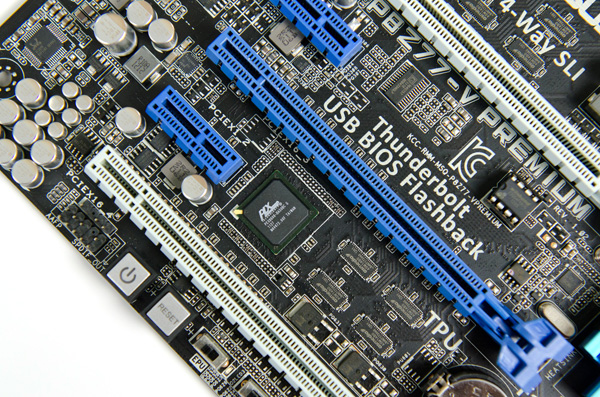
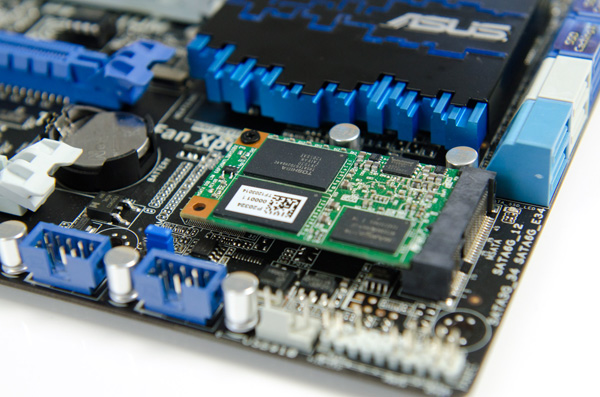
















116 Comments
View All Comments
CeriseCogburn - Monday, June 4, 2012 - link
Too bad it wasn't nVidia doing it, you'd have a horde of raging, angry amd fans on your bandwagon 100%. It seems to me the APPL factor has reduced that quantity significantly, as in the I'm and mine is better than you and yours scenario, so "embracing" is in order.Exodite - Sunday, June 3, 2012 - link
Beta was superior to VHS, as was Firewire to the original USB specs.Yet it's clear which are footnotes in history and which were actively used.
The problem isn't TB's technical merits, those are solid enough, but rather the implementation.
What use is it for the general consumer?
And what possible point is there in being backwards compatible with mini-DP, which is at best a fringe standard in its own right?
Maybe TB will take off but I fear it's going to be the next Firewire, mostly due to implementation issues.
KPOM - Sunday, June 3, 2012 - link
The use of mDP was necessitated because the USB Foundation did not permit Intel to route Thunderbolt through a USB port (though Sony did it anyway). Apple then offered up the mDP.I see Thunderbolt having a better chance of becoming popular on notebooks. It can become a universal docking port for devices such as the Apple Thunderbolt Display and PC equivalents. Particularly since Intel is pushing Ultrabooks, we may see more people using an Ultrabook plus external monitor as their "desktop" and a tablet for travel. It's better than today's solution where every manufacturer has a proprietary dock that sometimes doesn't even work across notebook lines within the same manufacturer.
TB will never be as popular as USB 3.0, but it doesn't need to be. With USB 3.0 and TB, no other ports are really necessary. USB 3.0 can handle all the peripherals and even external storage, while TB can handle the display, external GPUs, and high speed networking.
jleach1 - Sunday, June 3, 2012 - link
I see less of an advantage for TB in the workstation place. While its merits will bring it the most significant impact in this area, I see it truly earning it's chops and recognizability in the CE space....specifically, in docking solutions that will allow a new wave of innovation in the mobile market. Ubuntu is already coming to android. Imagine having the ability to drive a high-er Res display from your phone, while powering the device and providing peripheral support through a single cable. Think web top on steroids.An android phone with a quad core 2.0 ghz processor, popped into a docking station that provides bandwidth for an external gpu, to drive a display and sound, and more than enough networking bandwidth.
derektrotter - Monday, June 4, 2012 - link
The Thunderbolt chipsets are taking 5W (as mentioned in the articles)!Your phone would overheat and/or flatten its battery in no time.
Thunderbolt is a poor match for handheld devices, at least right now.
dagamer34 - Sunday, June 3, 2012 - link
The BEST a regular consumer might hope for is a dock with USB 3.0, Firewire 800, eSATA, HDMI out, and a multi-card reader. Anything above that is purely professional stuff, meaning the chances of it being adopted on a broad level of consumer devices is almost nil.KPOM - Sunday, June 3, 2012 - link
Thunderbolt has more than enough bandwidth to handle such an adapter with ease. That's almost what the Apple Thunderbolt Display is (except it has mDP instead of HDMI and USB 2.0 instead of 3.0 - I wouldn't be surprised if the 2012 version gets USB 3.0 ports).CeriseCogburn - Friday, July 6, 2012 - link
Firewire is used with moveable devices, as the angry mobius stated, 90's vcams for instance.The firewire plug pulls out like butter compared to usb - and I'd wager that's 3/4ths of firewire's failure. Using it - it freakin unplugs - like.. ALWAYS.
Most usb's are very snug, easier to connect correctly, large enough that you can feel for it blindly... and it's not usually going to come flyig out even when you use the device and move it about a lot.
Firewire - P L U G epic fail.
taltamir - Sunday, June 3, 2012 - link
There is a difference between FASTER and SUPERIOR.USB:
+Cheap
+Just works
-Slower
TB:
-Very expensive
-Compatibility and certification issues
+Much faster
These all put together guarantee that TB is going to fail.
coder543 - Sunday, June 3, 2012 - link
Birth pains. Every interface has them. They don't tell anything about the interface's future once it grows up, if it survives that long.